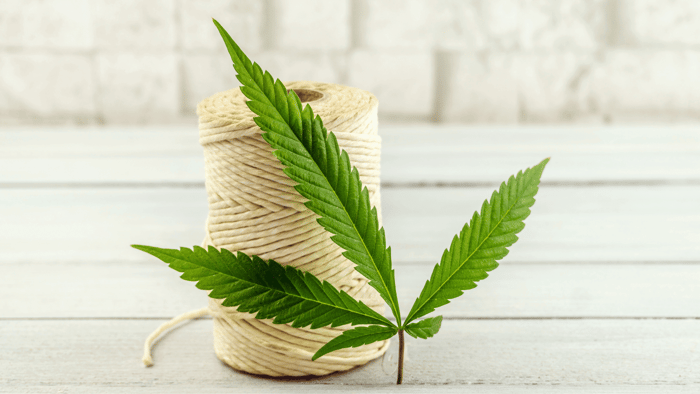Few botanical elements within the expansive canvas of American history possess a narrative as intricate and compelling as hemp. Once hailed as an invaluable and versatile crop, hemp underwent an unexpected decline in reputation, largely due to misconceptions and political influences. The trajectory of hemp in the United States constitutes a captivating saga illustrating profound societal transformations, economic intricacies, and regulatory developments.The Early Fabric: Hemp's Multifaceted Utility
Hemp, scientifically recognized as Cannabis sativa, boasts a rich historical legacy spanning millennia. Its multifaceted applications have traversed various ancient civilizations, notably in textile manufacturing, paper production, and medicinal uses. Within the United States, hemp has deep-seated origins, cultivated as a pivotal crop since the era of colonial settlement.
During the 17th and 18th centuries, hemp was celebrated for its versatility. The fibers derived from its stalks were spun into durable textiles used in sails, ropes, clothing, and even the parchment of the Declaration of Independence. Its robust fibers made it indispensable in maritime industries, contributing significantly to the nation's economic growth and infrastructure development.
In addition to its textile contributions, hemp seeds were highly prized for their nutritional richness, serving as a robust source of protein, essential fatty acids, and a spectrum of nutrients. Moreover, the plant featured prominently in medicinal applications, with extracts and tinctures widely embraced for their purported therapeutic properties.
Prohibition and Misconceptions
However, the fabric of hemp's reputation began to unravel in the early 20th century, largely due to the conflation of hemp with its psychoactive cousin, marijuana. As anti-cannabis sentiments gained momentum, fueled by moral and racial prejudices, regulatory measures were enacted without distinguishing between industrial hemp and marijuana.
The enactment of the Marihuana Tax Act in 1937 was a pivotal moment. Although ostensibly aimed at regulating recreational marijuana, this legislation imposed rigorous taxation and regulations encompassing all cannabis varieties, including industrial hemp. Consequently, the hemp industry suffered a significant setback, experiencing a sharp decline in cultivation and production.
The Marihuana Tax Act was driven by a complex interplay of factors. Racial biases significantly contributed, as certain factions associated marijuana with Mexican immigrants and African American communities, leveraging these associations to foster fear and facilitate the act's passage. This blend of racial prejudices, economic interests, and political motives intertwined within the decision-making process.
Economically, the hemp industry posed a threat to both the timber and emerging petrochemical sectors, prompting their advocacy for the ban to eliminate competitive pressures. Furthermore, a prevailing anti-drug sentiment, fueled in part by sensationalized media reports linking marijuana to violent crimes, propelled the act forward. Despite opposing voices emphasizing the medicinal and industrial benefits of cannabis, the climate of fear prevailed, leading to the act's enactment.
Misinformation and the lack of distinction between hemp and marijuana perpetuated a stigma that lingered for decades. The plant's immense potential and historical significance were overshadowed by misconceptions surrounding its psychoactive properties.
Resurgence and Rebirth: Rediscovering Hemp's Potential
Fast forward to the 21st century, and a resurgence of interest in hemp has emerged. With shifting attitudes and a growing awareness of the plant's industrial and environmental benefits, legislative changes have paved the way for a revival of hemp cultivation in the United States.
The Agricultural Improvement Act of 2018, commonly referred to as the Farm Bill, was a game changer and large contributor to the resurgence of hemp's popularity . It legalized the cultivation and commercialization of industrial hemp, distinctly categorizing it from marijuana due to its minimal THC (tetrahydrocannabinol) content. This change in the law opened up a world of possibilities for farmers, entrepreneurs, and researchers, sparking renewed interest in a wide range of products made from hemp, such as textiles, construction materials, and CBD-supplements and wellness products.
Hemp's Future In America
Hemp's potential for sustainability across multiple industries is pretty remarkable. Its eco-friendly nature stems from a myriad of factors that make it a standout resource for a more sustainable future.
1. Environmental Benefits: We love a crop with a minimal environmental impact! It grows rapidly and densely, requiring fewer pesticides and herbicides compared to many other crops. Additionally, it has a keen ability to absorb carbon dioxide from the atmosphere, making it a valuable tool in carbon sequestration efforts. Its deep root system also helps prevent soil erosion, preserving valuable topsoil.
2. Versatile Applications: Fibers can be transformed into textiles, ropes, and paper, offering a renewable and biodegradable alternative to conventional materials. Hemp-based construction materials, such as hempcrete, showcase its potential for creating sustainable buildings with excellent insulation properties and a lower carbon footprint.
3. Health and Nutrition: Hemp seeds are a nutritional powerhouse, packed with protein, essential fatty acids, vitamins, and minerals. The seeds can be used in a variety of food products, from oils and protein powders to granola bars and milk alternatives, providing a sustainable source of nutrition for a growing population. Flower can be extracted to remove the cannabinoid rich oil used to make CBD and hemp-derived THC products like the ones that we make right here at Butler.
4. Industrial and Commercial Uses: Hemp's applications extend to industries like automotive, textiles, cosmetics, and plastics. Its fibers can reinforce composites in manufacturing, reducing the need for synthetic materials and contributing to more durable and sustainable products.
5. Potential for Renewable Energy: Biomass can be converted into biofuels, presenting a renewable energy source that could help reduce dependence on fossil fuels.
Ongoing research into the diverse applications of hemp, including its potential for biodegradable plastics, biofuels, and advancements in medicinal uses, suggests a looming resurgence in the coming years. As perceptions shift and legislative barriers are dismantled, its reintegration into American agriculture and industry represents not just a revival but a reconnection with a plant that has been entwined with human history for millennia.




